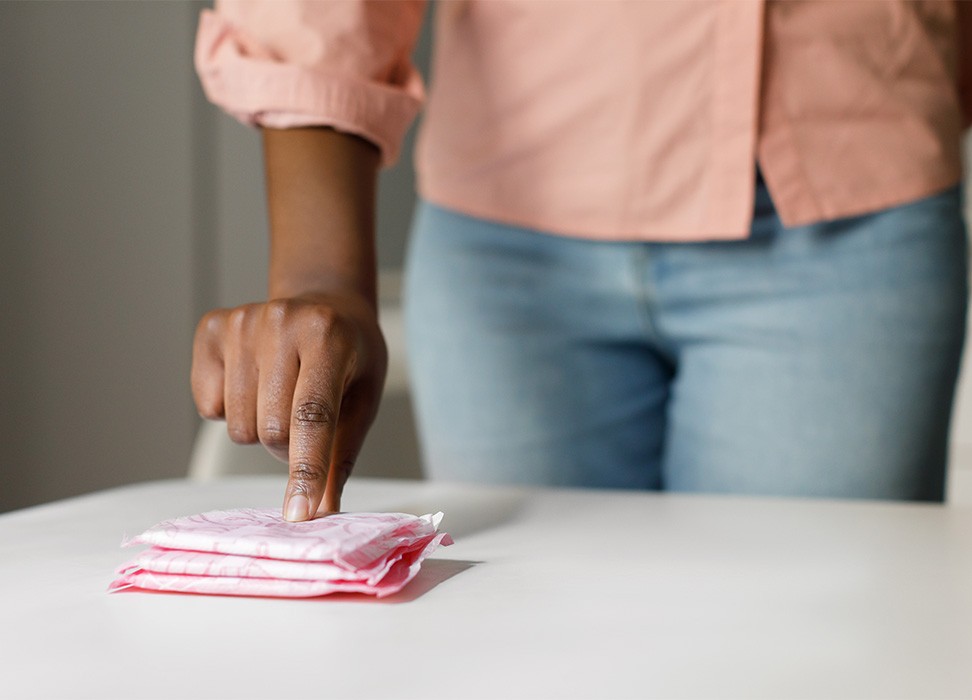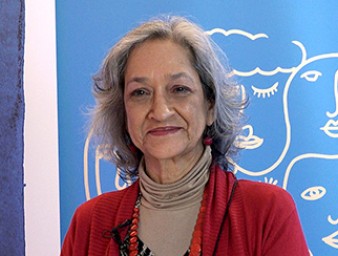Breaking the taboos around menstrual health for gender equality
28 May 2024

More than 50 percent of the world’s population menstruate at one moment or another and during most of their lives. Yet, menstruation remains steeped in silence.
“We live in a society where we hide what we consider ugly, dirty or disgusting. This obviously involves everything from urine and faeces to cellulite, wrinkles, and various bodily secretions,” said Véronique Kupper, one of the founders of Kokliko, a Swiss company that provides workshops, educational resources and products to support women in their mental and physical wellbeing.
"Until recently, what happened to women was not worthy of interest, and this is still the case, depending on the country or background", added Ms Kupper with dismay.
On 28 May 2024, UN Human Rights partnered with the City of Morges, located in the Canton of Vaud, Switzerland, to organise a day of awareness around World Menstrual Hygiene Day. Kupper was one of the participants in a panel discussion on menstrual poverty.
Apart from being confronted with a wall of silence around menstruation, many women and girls around the world, as well as non-binary and intersex people, who menstruate face other challenges in managing their periods. These include financial difficulties in accessing menstrual products such as sanitary pads, tampons, menstrual cups and cloth; a lack of access to water and sanitation and private and safe spaces to wash and change during their periods; and little access to information about menstruation before the start of their first periods.
According to a survey conducted in 51 countries by the WHO/UNICEF Joint Monitoring Programme for Water Supply, Sanitation and Hygiene, the menstrual product use gap between the richest and poorest populations surveyed exceeds 50%, such as in the Democratic Republic of Congo, Madagascar, Nepal, Tuvalu and the Lao People's Democratic Republic, where the use gap is 50 percent between the richest (97%) and poorest (47%). Further, a staggering 10 percent of those who experience their menstrual cycles and reside in rural areas do so without access to any menstrual products.
For Doctor Katyuska Francini, a specialist in maternal and foetal medicine at the University Hospital in Lausanne, Switzerland, apart from conveying antiquated cultural notions, how menstruation is managed can reveal barriers to gender equality.
“[Menstruating] limits women in various daily activities, such as cooking, exercising, and attending public and religious functions. In some countries, having your first period means being ready for marriage (although that can happen at only 10 or 11 years old) and can also mean being unwell and missing school and work, which can lead to discrimination,” she said.
Cultural, social and economic disparities and harmful gender stereotypes and practices compromise the autonomy and ability of those who menstruate to make free choices and decisions, particularly linked to their access to information and healthcare services, the choice of menstrual products to use and how to use them, and whether or not to participate actively in cultural, social, economic and public life.
Ending menstrual poverty
In Vaud, one of Switzerland’s 26 cantons, the level of menstrual information among Dr Francini’s patients is varied.
“Young patients who go to school in Switzerland are educated on menstruation through the PROFA [Foundation] (or equivalent) and in biology lessons. Even after a few years, their knowledge remains. For young migrant girls, or those who have not been able to take courses on the subject for cultural reasons, their concepts are poor,” she said. “Menstrual poverty is clearly present in Switzerland as elsewhere. A study conducted among young students in the canton of Vaud revealed that five percent of girls found it difficult to buy sanitary towels. And these are not people in very low-income situations!”
From 2021-2023, a pilot project to combat menstrual poverty was launched in the canton of Vaud, with various activities, such as surveys and statistics, as well as the installation of free menstrual product dispensers in some 20 schools.
“The project, carried out by the School Health Protection and Prevention Unit, confirmed the existence of menstrual insecurity, both in terms of access to products and information,” Kupper said. “As a result, schools that acquire these dispensers must also set up information sessions or workshops for pupils, such as those that Kokliko has been running in schools since 2023.”
Since the adoption of the 2030 Agenda for Sustainable Development in 2015, the international community has made efforts to promote menstrual health through various indicators, adopting resolutions at the UN General Assembly and the UN Human Rights Council, and developing national and regional plans to manage menstrual hygiene and improve access to products and information.
In its Resolution 47/4 of 26 July 2021, the first of its kind, the Human Rights Council established the link between the right to the highest attainable standard of physical and mental health and menstrual hygiene.
The Council also called on States to ensure that women and girls have access to facilities, information and products that are suitable for the optimal and effective management of their menstrual hygiene through: equitable access to water; the removal of taxes on menstrual material, and help for families in economically vulnerable situations; improving infrastructure, transport and information on menstrual hygiene; access to facilities, including for disabled people; and information campaigns to combat the stigma, stereotypes and negative social norms surrounding hygiene.
“Anchoring the discussion on women's health within the normative human rights framework allows the right to health to be addressed as a matter of equality and non-discrimination. That framework should guide all interventions affecting the health of women and girls,” said Caroline Ouaffo Wafang, advisor on women’s rights at UN Human Rights. “Women and girls have a right to specific treatment when it comes to health, including and beyond their sexual and reproductive health, and in the development of policies and the allocation of resources.”



